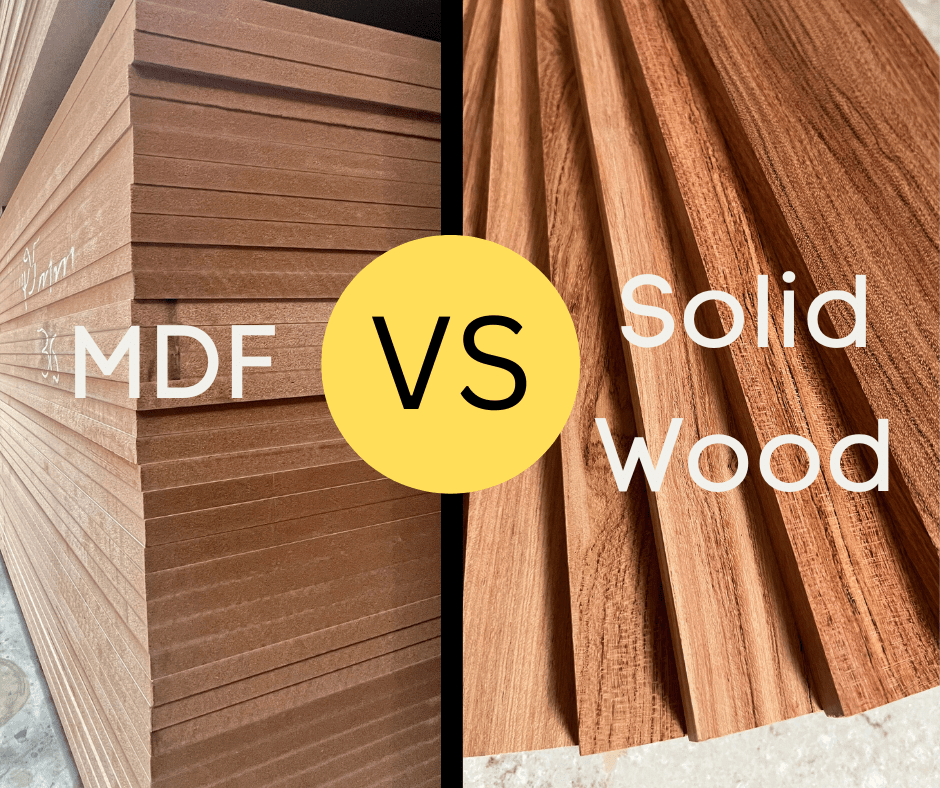
When choosing furniture for your home or office, one of the most important decisions is the material. While MDF (Medium Density Fiberboard) has become popular for budget-friendly furniture, solid wood remains the gold standard for durability, aesthetics, and long-term value. If you’re considering high-quality furniture for a workspace, school, or home, here’s why solid wood is the superior choice over MDF.
1. Durability and Longevity
Solid wood furniture is built to last. Made from natural hardwoods like cherry, oak, maple, hickory, mahogany, and walnut, solid wood pieces withstand daily wear and tear far better than MDF.
- Resistant to Impact – Solid wood can handle heavy use, impacts, and weight, making it ideal for conference tables, desks, and lecterns in the most professional settings.
- Lasts for Decades, Literally – With proper care, solid wood furniture can last generations, whereas MDF often deteriorates in just a few years.
2. Superior Strength and Stability
Unlike MDF, which is made from compressed wood fibers and adhesives, solid wood is a single, continuous material, giving it natural strength and stability.
- MDF is prone to sagging under weight, especially in larger furniture pieces like desks or bookcases.
- Solid wood typically remains sturdy and warp-resistant, even in high-humidity environments.
3. Aesthetic Appeal and Natural Beauty
One of the biggest advantages of solid wood furniture is its unique grain patterns and rich finishes. Unlike MDF, which often requires a veneer or laminate to mimic wood, solid wood:
- Showcases authentic grain, knots, and natural variations, giving each piece a distinctive look.
- Can be custom-stained, or sanded down and refinished over time to match evolving design trends.
- Develops a beautiful patina with age, adding character and depth to the piece.
4. Repairability and Refinishing
MDF is very difficult to repair if damaged, often requiring complete replacement. Solid wood, on the other hand, can be:
- Sanded and refinished to restore its original beauty.
- Repaired easily if scratched, chipped, or dented—unlike MDF, which can swell or fall apart when damaged.
This makes solid wood a long-term investment rather than a temporary purchase.
5. Environmental and Health Benefits
Solid wood furniture is a more sustainable and eco-friendly choice than MDF, which contains synthetic resins and formaldehyde-based adhesives.
- Lower VOC Emissions – MDF can off-gas harmful chemicals, impacting indoor air quality, while solid wood is non-toxic and natural.
- Biodegradable and Renewable – Responsibly sourced wood is an eco-conscious material choice, unlike MDF, which is difficult to recycle.
6. Higher Resale Value
Solid wood furniture retains its value over time, often becoming an heirloom piece. MDF, on the other hand, is seen as disposable, with little to no resale market.
- Solid wood maintains its worth, making it a smart investment.
- MDF depreciates quickly, often needing to be replaced within a few years.
Final Thoughts: The Smart Choice for Quality Furniture
While MDF may seem like an affordable option, it lacks the strength, longevity, and aesthetic appeal of solid wood. Whether you’re furnishing a conference room, office, school, or home, choosing solid wood furniture means investing in quality, sustainability, and lasting beauty.
At Executive Wood Products, we specialize in handcrafted, solid wood furniture designed to stand the test of time. Explore our collection of luxury wood tables, desks, lecterns, and ballistic furnishings—all made in the USA with superior craftsmanship.
